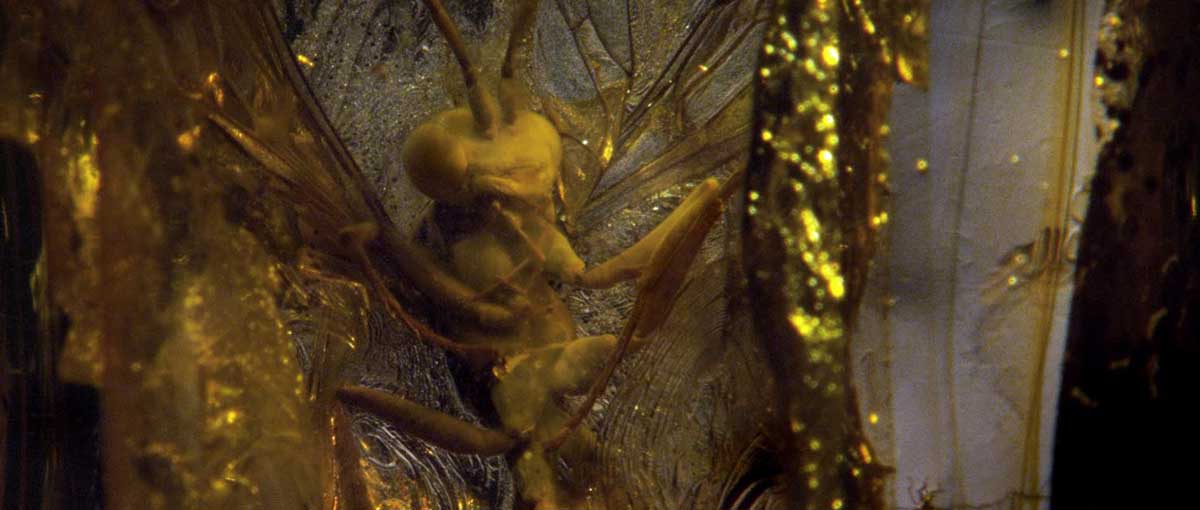
Frame from De-Extinction, 2016
Pierre Huyghe’s works push the limits between fiction and reality. His work materializes in a variety of media including film, live situation or exhibition, at times operating as ecosystems – gardens, aquariums, or even a museum with programmed microclimate. In his practice, the artist uses elements that challenge the notion of the artistic object. Both the visitor and other organisms can be incorporated into a dynamic network, in order to create a large living organism in constant evolution. De-Extinction (2016) is a navigation into an amber stone, into an instant frozen in time, in which a living network – suddenly, randomly – come to a stop. The film was made with motion control cameras that capture microscopic images of a piece of amber – a fossilized tree resin which holds the remains of living things intact for 30 millions of years. What at the beginning might present itself as a cosmos takes on another aspect as the film leads to the interior of the translucent material, revealing imprecise forms and textures, eventually focusing on the earliest known specimen caught in copulation, in the act of potential reproduction. In the next space, De-Extinction (S.P. Evolution) (2016), live insects, descendants of the same species seen in the film are selforganizing in their new environment.
